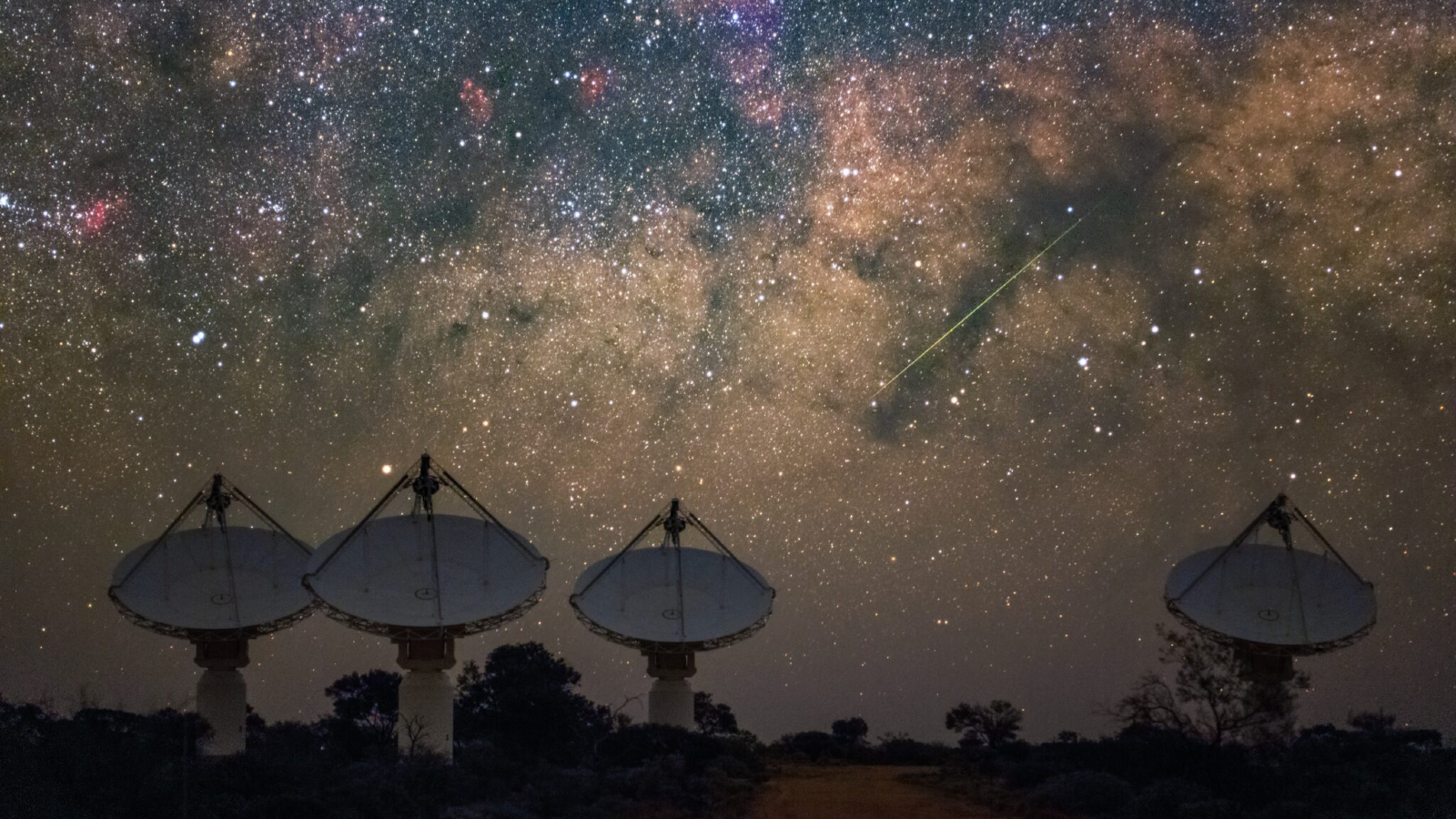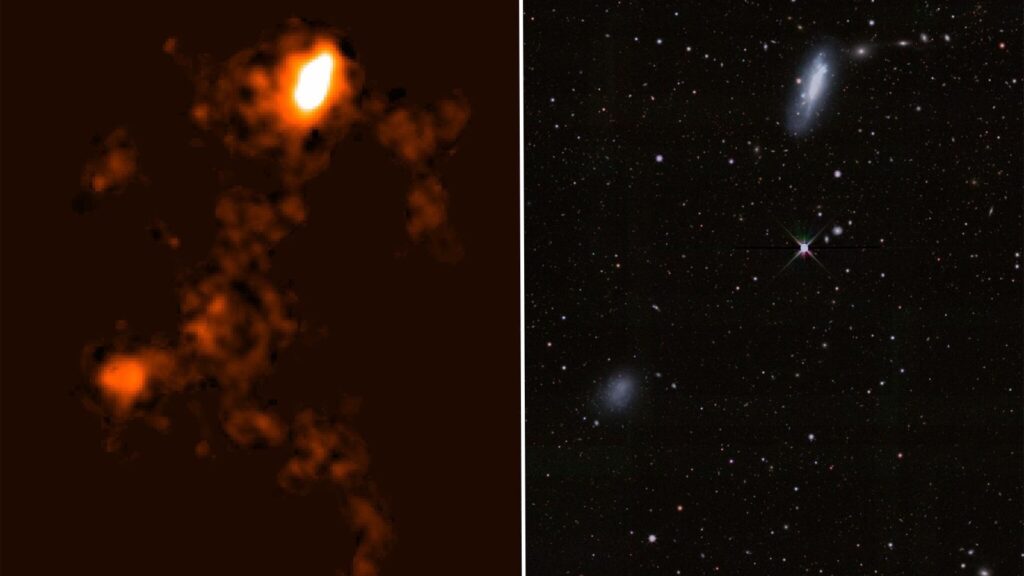Astronomers have discovered a colossal bridge of near-invisible gas — spanning around twice the width of the entire Milky Way — connecting a pair of distant dwarf galaxies. The adjoined entities also share a record-breaking galactic tail, which is more than 15 times longer than our galaxy is wide.
The dwarf galaxy duo, NGC 4532 and DDO 137, is located approximately 53 million light-years from Earth, right on the edge of the Virgo cluster of more than 1,000 galaxies. The pair is similar to the Large Magellanic Cloud (LMC) and Small Magellanic Cloud (SMC) — adjacent dwarf galaxies that closely orbit the Milky Way — but they are not bound to any single entity. Instead, they appear to be slowly falling into the Virgo cluster.
In a study published Sept. 23 in the journal Monthly Notices of the Royal Astronomical Society, researchers reanalyzed the WALLABY data and found a giant gas bridge that filled the roughly 185,000 light-year gap between NGC 4532 and DDO 137. The newly realized bridge forms a near-perfect straight line and contains an unexpectedly high concentration of star-forming gas.
Trailing behind this thick bridge were several fainter tendrils of gas, including an enormous tail that stretched up to 1.6 million light-years long. This makes it the longest galactic tail ever seen, edging out a 1.5 million light-year tail that was discovered trailing the NGC 4839 galaxy group in 2023, researchers wrote.

The bridge and tail are both made from neutral hydrogen gas, which is the key building block for making new stars and galaxies.
“Neutral hydrogen plays a crucial role in the formation of stars, making this finding fundamental to understanding how galaxies interact and evolve, particularly in dense environments,” study co-author Kenji Bekki, an astrophysicist at the University of Western Australia (UWA) and the International Centre for Radio Astronomy Research (ICRAR), said in a statement.
Researchers suspect that the bridge was formed by a “close passage,” or near miss, between the two mini galaxies more than 1 billion years ago, when they narrowly avoided colliding with one another. The tidal forces of this interaction likely pulled a large chunk of neutral hydrogen from the smaller galaxy toward the larger one, which has since stretched out between the two.
The pair’s long tail, meanwhile, is likely being stretched out by a phenomenon known as “ram pressure.” This is caused by the galaxies moving through the superhot cloud of gas surrounding the Virgo cluster, which reaches temperatures up to 200 times hotter than the sun’s surface. As the pair have fallen through this cosmic inferno, the gas within their shared bridge has been slowly sheared off into a tail.
“The process is akin to atmospheric burn-up when a satellite re-enters the Earth’s upper atmosphere, but has extended over a period of a billion years,” study lead author Lister Staveley-Smith, an astronomer with UWA and ICRAR, said in the statement. It is also the same process that created the 1.5 million light-year tail of NGC 4839.
Further analysis of the bridge and tail, as well as similar structures that could also be lurking in the WALLABY data, could help researchers to better understand how galaxies change over time.
“Understanding these gas bridges and their dynamics provides critical insights into how galaxies evolve over time, how galactic gas is redistributed, and the varying conditions under which galaxies may or may not form stars,” Staveley-Smith said.
Comparing the dwarf galaxies from the study to the LMC and SMC could also shed light on how these structures evolve with and without a larger galactic partner, the researchers wrote.
